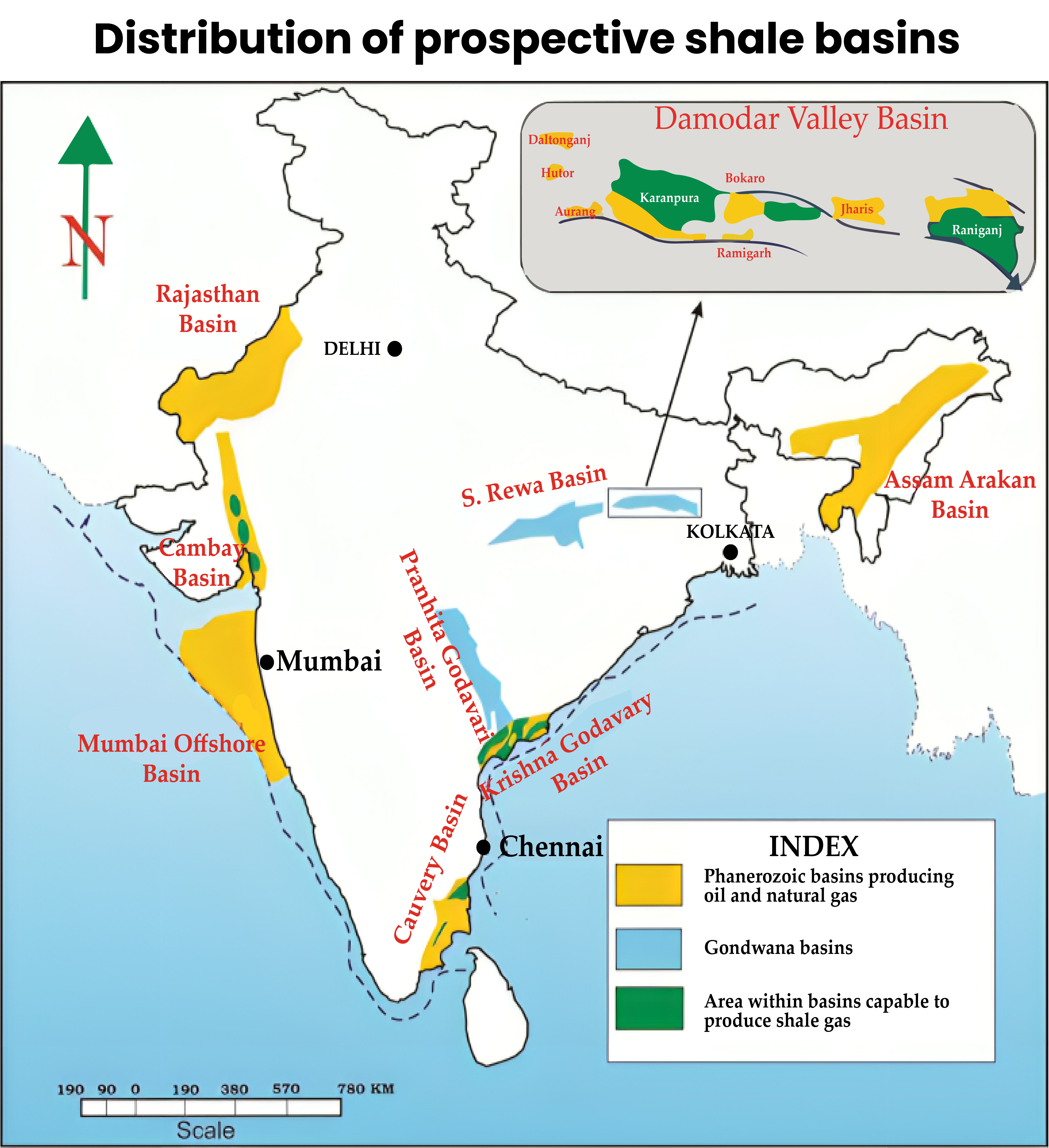The Study was conducted by scientists from Birbal Sahni Institution of Palaeosciences, Lucknow, an autonomous institution of the Department of Science and Technology.
- The potential for hydrocarbon generation within a source rock is largely determined by the concentration of organic matter.
About Shale gas
- Shale gas is a form of natural gas (mostly methane), found underground in shale rock.
- The gas is extracted using a process called hydraulic fracturing, or fracking, which involves injecting high-pressure water, sand, and chemicals into the shale formation to crack it.
- The gum made from Cluster bean (Guar) seed is used in the extraction of shale gas.
- Shale is a fine-grained, sedimentary rock formed as a result of the compaction of clay, silt, mud and organic matter over time.
- Shales were deposited in ancient seas, river deltas, lakes and lagoons and found at both the Earth’s surface and deep underground.
Measures taken by Government
- Hydrocarbon Exploration and Licensing Policy (HELP) in 2016, which allows for a uniform licensing regime covering conventional and unconventional resources, including shale gas.
- PSUs like ONGC and Oil India Limited have been granted permission to explore shale gas within their existing oil and gas blocks.
- Guidelines for Environmental Management during Shale Gas/Oil Exploration and Production.






